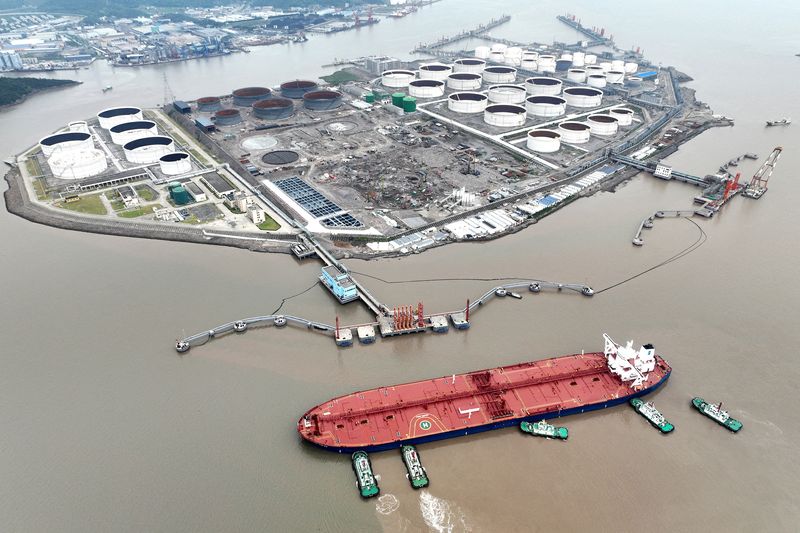(Reuters) -China is building oil reserve sites at a rapid clip as part of a campaign to boost crude stockpiles that increased in urgency after Russia’s Ukraine invasion upended global energy flows and has accelerated this year, according to public data, traders and industry experts.
State oil companies including Sinopec and CNOOC will add at least 169 million barrels of storage across 11 sites during 2025 and 2026, according to public sources including domestic news reports, government reports and company websites.
Of that, 37 million barrels of capacity has been built, the sources show. Once completed, the new sites will be able to store two weeks of China’s net crude imports, according to Reuters calculations based on Chinese trade data, a significant volume as China is by far the world’s biggest oil importer.
Beijing’s reserve-building – S&P Global Commodity Insight last month estimated China had stockpiled an average of 530,000 barrels per day thus far in 2025 – is soaking up surplus global supply and supporting prices under pressure as the OPEC+ producers group winds down production cuts. Traders and consultancies say they expect the stockpiling, fuelled by prices recently below $70 per barrel, to continue at least through the first quarter of 2026.
China’s heavy dependence on foreign oil, carried mainly by tankers, is a strategic vulnerability that Beijing is seeking to mitigate through storage, diversification of import sources and maintaining domestic production. China is also rapidly developing renewable energy and electrifying its vehicle fleet, with both gasoline and diesel demand declining and overall oil consumption likely to peak in 2027.
Its reserve site construction is accelerating. The new additions planned for this year and next, based on Reuters research, nearly match the 180-190 million barrels of capacity that analytics firms Vortexa and Kpler, respectively, estimate were added in the previous five years.
China’s secrecy about its reserves means the list may not be comprehensive and the status of projects could change.
Beijing built its first strategic reserve site in 2006, but its recent push stems from the aftermath of Russia’s 2022 invasion of Ukraine, which triggered a wave of disruptive sanctions on Moscow and highlighted the vulnerability of Beijing’s oil imports, traders and analysts said.
Since late 2023, Beijing has quietly issued mandates to state-owned companies to stockpile oil, traders and analysts say. London-based Energy Aspects in July cited a mandate calling for 140 million barrels to be purchased for strategic reserves, with deliveries through March 2026.
Story Continues
